Last updated on January 9th, 2025
Feature image: It’s easy to fall for the sights, sounds and flavours of Seville, Spain | Photo by santiago silver on Adobe Stock
An Insider’s Tips to Discover This ‘Sweet Little City’
By Sally Peabody, Contributing Writer
 Our first day in Seville was already going well. We had navigated our way into the old town from our rental apartment located slightly outside the city center. Then, we cadged a cozy table at the wildly popular gastro-small-plates place, Brunilda, moments after it opened, where we savored luscious Spanish delicacies in typically animated Sevillian surroundings. Post-lunch, we explored the atmospheric Arenal/Bullring quarter near the Guadalquivir River. We had just paused at a bus stop to study the routings when a slightly scruffy middle-aged man approached.
Our first day in Seville was already going well. We had navigated our way into the old town from our rental apartment located slightly outside the city center. Then, we cadged a cozy table at the wildly popular gastro-small-plates place, Brunilda, moments after it opened, where we savored luscious Spanish delicacies in typically animated Sevillian surroundings. Post-lunch, we explored the atmospheric Arenal/Bullring quarter near the Guadalquivir River. We had just paused at a bus stop to study the routings when a slightly scruffy middle-aged man approached.
“Are you Americans?” Oh-oh! We evasively nodded. “Do you need any help?” Relaxing a bit, we entered into the beginnings of a conversation. The minutes evaporated. It turned out that he was retired from the U.S. Navy after spending most of his career at sea. Post-retirement, a visit to Seville had utterly seduced him, and he had chosen to stay. “This is one SWEET little city,” he said with contagious enthusiasm. He told us that he had been warmly welcomed, that he had made many friends, and that he had settled in “for the foreseeable future.” His parting words were, “You’re going to love this place. Come back and stay for a while.”
He was right! He proved to be one of those ‘travel angels’ who intersect your path at a strategic moment. In ensuing years, my husband and I have returned to Seville numerous times. Initially, I found it to be a superb locale for my culinary tours. And such in-depth exposure to the city kept drawing us back. Ultimately, following our angel’s advice, we have rented an apartment for a full month, settled into the city’s daily rhythms, and enjoyed just about everything we discovered.
To appreciate the true gem that is Seville, one should not ignore the various facets of its heritage, culture and culinary traditions. We like to create a day’s itinerary that includes some art, some beautiful architecture, a convivial meal, a garden, some minimally informed wandering in an interesting quarter, a taste of tapas, and typically some music or dance. Living such ‘perfect days’ seems easy in this “sweet city.”
Immense riches flowed into Seville from the Spanish colonization of South America, ultimately financing a multitude of monumental public buildings and ornate churches featuring massive gold or silver altarpieces. Once-wealthy monasteries and convents commissioned artists like Murillo and Velasquez. Seville boasts alluring palacios full of their own enviable artworks, and still home, in some cases, to Andalucia’s storied families. Several of these can be visited. Plus, there are numerous Unesco World Heritage sites in this easily walkable city. Indeed, be your interest history, art, architecture, or food, Seville will readily offer a feast for everyone.
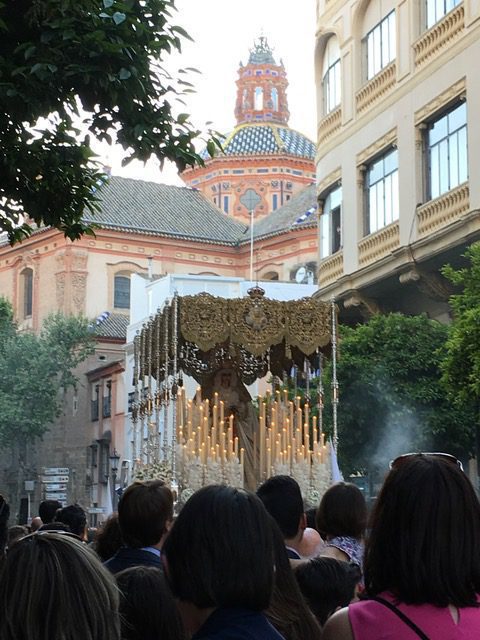
Virgin Paso / Photo provided by Sally Peabody
When to go
While it is surely not optimal to visit Seville in summer due to the inland-Andalucian heat, the spring and fall are lovely. And the winter is temperate, with the cultural scene in full swing. In particular, I have discovered that the combination of the superb FeMAS early music festival, followed immediately by the dramatic processions of Semana Santa (Holy Week), provides an extraordinary early-spring month. FeMAS events are held all over the city for more than two full weeks before Semana Santa. They bring an ambitious roster of groups large and small to perform in Seville’s concert halls, ancient monasteries, convents and churches, in the great Gothic Cathedral, and even at the glorious Alcazar.
Immediately following the FeMAS concerts, the 24/7 pageantry of Semana Santa commences on the Saturday eight days prior to Easter. Dozens of ‘brotherhoods’ with hundreds (sometimes thousands) of members fill the streets as they process for up to 14 hours alongside their parish’s massive pasos (human-borne floats). Many of the pasos date back centuries. There is almost always an image of the grieving Virgin Mary, surrounded by myriad candles that are frequently replaced or re-lit so as to create a bright focus of piety.
Many of the pasos portray Christ experiencing the rigors of the Passion. Borne by up to 40 brawny men concealed beneath, and sporting larger than life-sized figures, the pasos are carried from their home parishes to the Cathedral and back. The ‘penitents’ who walk with them are of all ages, wearing distinctively colored robes and pointed hoods with eye-holes only, allowing for virtually no fresh air. The largest processions sport 3,000 such “Nazarenos” and can take up to 90 minutes to pass. Streets throughout the central city are utterly packed as more than 60 processions wind their way day and night. Movement in the city is completely disrupted until Easter Sunday, when one final procession bearing an image of the resurrected Christ marks the end of Holy Week.
It should be stressed that at no time is this a party scene. Crowds of devoted, respectful observers line the routes to await their favorite pasos, watching with reverence as the penitents slowly pass. For a pair of progressive Protestants like ourselves, experiencing Semana Santa is mysteriously compelling, a deep dive into Spanish spirituality. It is decidedly not for those interested in a quiet, romantic interlude, or for anyone for whom the Holy Week symbolism of sacrifice and crucifixion is not meaningful.
But why visit Seville at other times? Because it is one of Europe’s truly simpatico places to sojourn. The vibe is social and friendly. The feel is relaxed Mediterranean, noticeably less formal than in northern Iberia.
Exploring Barrio Santa Cruz, in the Alluring Old City
Most first-time visitors focus on Barrio Santa Cruz in the Old City, including the medieval Juderia (Jewish quarter) with its romantic “where-am-I?” warren of narrow streets and suddenly come-upon gathering places. Endlessly alluring with its tempting shops, cafe-lined tree-sheltered squares, colorful historic buildings, and enticing nooks and crannies, Santa Cruz defines the concept of “charming”. Decorative tiles and mosaics abound, adding color and texture to the rosy red, yellow and ochre facades. In spring, the air is perfumed with orange-tree blossoms. The quarter is replete with convivial tapas bars and restaurants serving hearty Andalucian specialties. And getting turned around in the medieval maze of streets is not a problem— serendipities abound and being a bit lost is part of the fun.
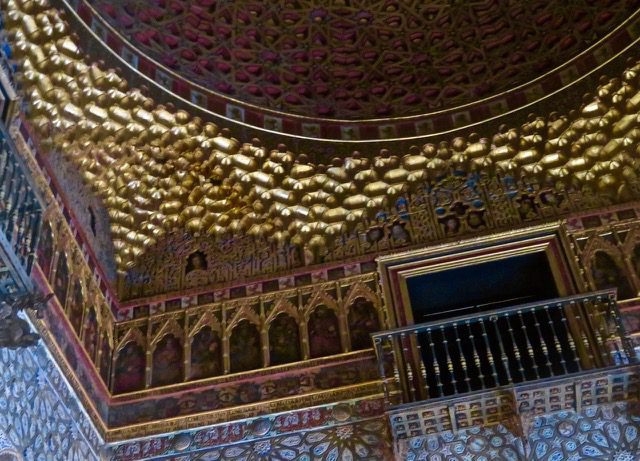
Interior architecture at Alcazar / Photo provided by Sally Peabody
On the edge of the Barrio Santa Cruz, one of Seville’s must-see sites is the stunning Royal Alcazar with its extensive gardens and its glorious Islamic architecture reminiscent of Granada’s Alhambra. The Alcazar offers the rare chance to explore a building initially constructed in 712 by Arab rulers. Adapted over the centuries by ensuing generations of Moorish rulers, the glorious Islamic architecture was embellished and expanded after the Christian ‘Reconquista’ in the 13th century, and eventually became a world-class example of Mudejar architecture, incorporating geometric, arched, lavishly tiled Islamic, Romanesque and Renaissance styles. You will want to take photographs galore! And a word to the wise— book a ticket in advance to avoid long entry lines.
Behind the Alcazar, there is a superb walled garden, a virtual slice of paradise. And outside the wall stretch the multi-acre ‘Royal Gardens,’ incorporating 187 species of trees (some massive), along with myriad flowers and shrubs, all set off by tiled fountains and ornamental gardens. Plan some extra time to explore this green urban oasis.
Very near the Alcazar stands the massive Gothic Cathedral (the world’s largest such edifice), with its Giralda (bell tower), originally a great minaret. The lively plaza between the Cathedral and Alcazar is filled with horse-drawn carriages draped with flowers, awaiting passengers for rides along the river or through the Santa Cruz quarter, or down to the historic Plaza de Toros (the city’s bullring with bullfights starting on Easter Sunday and continuing through the summer).
Elsewhere in Seville, remnants of the Islamic Golden Age live on in the riverside Torre d’Oro for example, which is now a museum, and from where half-hour river cruises depart.
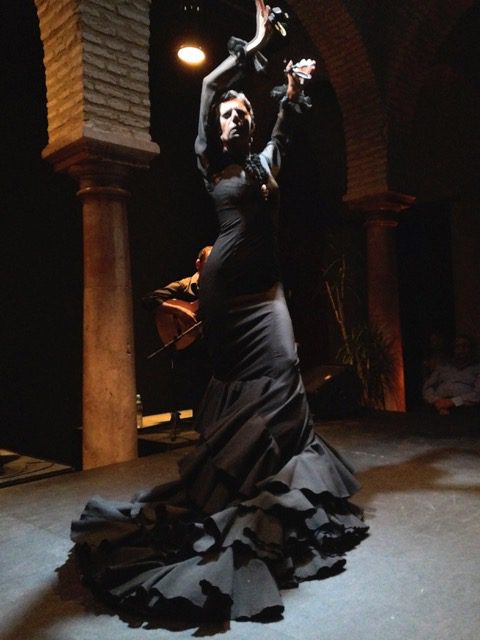
Flamenco dancing is steeped in tradition in Seville / Photo provided by Sally Peabody
Discovering Modern Spaces in Seville
There is much to love in Seville beyond the historic and monumental. Large modern orchestral spaces like the Maestranza, along with numerous smaller venues including Lope de Vega or the Espace Turino, offer a schedule of top quality music, dance, and performance that would bespeak a much larger city. Plus, there are festivals galore, most famously the April Feria, two weeks after Easter. And, of course, Seville enjoys a deeply soulful Flamenco tradition. There are worthwhile places to enjoy flamenco if you don’t want to seek out small bars where musicians and dancers perform into the wee hours of the morning. Try the Casa de la Memoria, or the Museo de Baile Flamenco in the Santa Cruz quarter. Both provide flamenco of superb quality.
Opera lovers will also find much of interest. Seville has been the inspiration for over 50 operas, most notably Carmen, The Barber of Seville, and Don Giovanni. The character, Carmen, worked in Seville’s Royal Tobacco Factory, a crescent-shaped monumental building now part of a University, set in the riverside oasis of Maria Luisa Park. And you will find placards all over the old city commemorating sites from famed operatic works. Plaza Alfano, an atmospheric square in Santa Cruz off Calle de Agua, is said to be home to the building with a wrought-iron balcony that inspired Romeo and Juliet.
Finding Joy in Sevillian Food
Oh my, the food! Sevillianos enjoy a vibrant tapas tradition offering an extensive range of traditional and “gastro” (gastronomic) tapas bars, as well as small-plate specialists and other restaurants providing full-meal dining at a broad range of price points. Super-fresh seafood is a major temptation, as is the palette of meat, rice, cheeses and vegetable preparations. And all of this is perfectly complemented by a voluminous range of Spanish wines, sherries, herbal vermouths, crisp beers and artisanal gin.
You may of course have to adjust your normal meal times to Spanish eating habits. While some hotels offer cooked breakfasts, this is decidedly not Sevillian. A small coffee and a piece of toasted rustic bread is typical for the first hours of the day, followed by a late morning snack. Lunch is often the main meal of the day, partaken of in the early-to-mid afternoon. Later in the afternoon, or in the early evening, a social drink and some tapas may be in order, or a couple of small-plates. Dinner, if taken as a full meal, will not be eaten until 9 pm at the earliest.
A Culinary Primer: Tapas, Jamon and Wine
Just a word about those tapas that Sevillianos so adore. Consider this a primer. Seville is a leader in the evolving Spanish gastro-tapas scene with its abundant options for tapas or small-plates, all encouraging culinary exploration. There are entire genres of room-temperature and hot tapas, classic and contemporary. First, let’s consider jamon.
Jamon (cured ham) sometimes mystifies non-Spaniards in that there are several grades and types, the very best being an utterly coveted luxury. Serrano, the ‘entry level’ ham, is delicious in sandwiches and salads, and finds its way into the cooking as well. The pigs that produce Serrano are typically raised on large farms and have a varied diet. However, as you work up through the grades of jamon to the celestial ‘5 stars’, or Cinco Jotas Iberico Bellota, the tastes get more richly aromatic, yet subtle, less salty. The very best jamon comes from Iberian black-footed pigs that roam under oak trees on small-scale farms where the cosseted animals, limited to a few per acre, eat primarily chestnuts and acorns. At least once, resolve to splurge on a tapa or a small plate of such expertly sliced deep-ruby jamon. It may cost 15 Euros for a small portion but it will be a revelation.
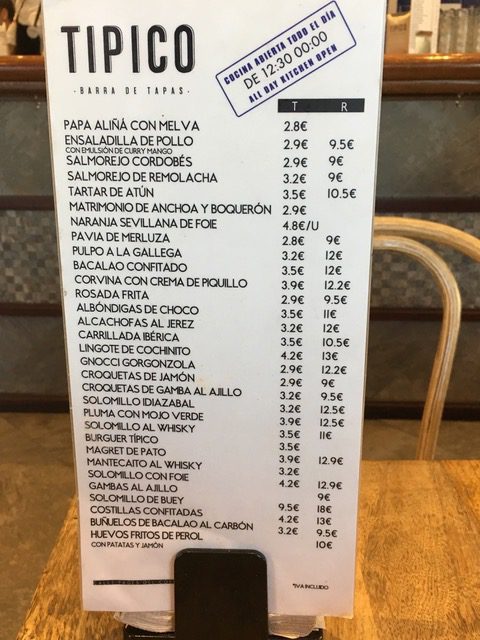
Other delectable Iberian pork products are likewise popular. Look for carrillada, (pork cheeks), generally braised in a rich wine sauce. Also, seek out solomillo, a small cut of pork loin seared and sauced with whisky.
Another tapas staple are croquetas, fried balls of bechamel featuring shrimp, cod, meat or vegetables. Freshly made, they can be devastatingly good. And of course, fresh seafood expertly and lightly fried is perennially popular.
Classic tapas include chickpeas with spinach, garlic shrimp, marinated white anchovies, or grilled chipirones (baby squid). Patatas bravas are nearly universal, small cubes of fried potato with spicy tomato sauce. In some of the more gastro-tapas places you may find earthy wild mushrooms with poached egg, tuna tataki, wild boar cheeks, and inventive risottos, along with other creative fish and meaty small-plates.
While people flock to their favorite tapas bar with friends, perhaps you are pressed for time. Or you’ve had a big lunch. De nada! A tapas break may consist of just a small dish of olives and a glass of sherry. Indeed, Seville is an excellent place to delve into the world of sherries as they are produced nearby in the ‘sherry triangle.’ Try some bone-dry Fino, or a medium-heft Amontillado, or a richer Oloroso. A bar-person can advise you on what to drink with your particular choice of food.
Are you traveling alone, or as a couple? Again, no problem. You will soon realize that Sevillianos are intensely social people. Once it is safe to do so again, you will enjoy the animated atmosphere as you stand up and eat at the bar, even if it is very crowded. Or if a quieter setting seems in order, choose a full-service or small-plates restaurant. You will not feel lonely.
Whether you want lunch, tapas, or dinner, google Brunilda, Puratasca, Vineria de San Telmo, La Azotea, or Eslava, all part of the profuse wave of gastro-small-plate places where you can (theoretically) find a table, order wine or other drinks, and choose two to three dishes to eat on your own or share as you wish. You may decide to mix up your tastes and portion-sizes, combining both tapas and small-plate offerings.
Off the Beaten Track: Museos y Palacios
Further off the beaten track, which a longer stay certainly allows one the time to explore, we have found a number of real favorites that have allowed us to dig deeper. Here are a few of those:
Seville’s Museo de Bellas Artes is set in a medieval convent just off the center of the Old City. The building alone is worth a visit, but the notable collection of Murillo paintings is the compelling reason to go. Murillo was a native son of Seville, and he remained in his beloved city, painting luminous religious works. The museum also sports a worthwhile collection of other Spanish artwork, including oils by Zurburan and Velasquez. Nearby the museum, we enjoy Yo Soy Tu Padre on Calle Gravina, a welcoming and intimately scaled Vermuteria, where the friendly young owner makes his own delicious vermuts to sip along with charcuterie, cheeses and other classic accompaniments. This is definitely where you should introduce yourself to Spanish vermouths, if you aren’t already a fan.
Less-Travelled Places: The Undiscovered Town of La Herradura in Southern Spain
The undiscovered town of La Herradura, near Malaga in Southern Spain, is central enough to visit the Alhambra and other historic sites.
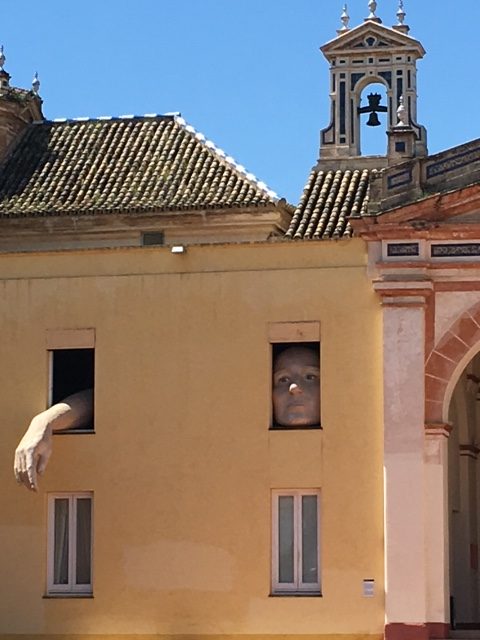
The exterior of the Seville Museum of Contemporary Art / Photo provided by Sally Peabody
The Museum of Contemporary Art is set in a sprawling medieval Carthusian monastery on the Isla Cartuja in the middle of the Guadalquivir river. The buildings alone are worth the visit if medieval architecture interests you. There is a small permanent collection, and the museum is always hosting provocative temporary exhibitions in its extensive galleries. There is a small cafe which makes for a very pleasant place to sit outdoors and enjoy a simple, tasty lunch. This cafe is the only place in Spain I have found that offers a very large mug of filter coffee whimsically called Cafe XXL. Usually you make do with a small espresso or a cortado, unless you sneak into a Starbucks.
Nearby, the Caixa Forum, in the lower levels of a shopping mall adjacent to the city’s single out-of-place monstrosity of a skyscraper office tower, hosts smaller scientific or art exhibitions that are worth checking out.
Back in the center city, you can’t get a better glimpse into a palatial private home than the Palacio de las Duenas. This is the ancestral home of the House of Alba, one of Andalucia’s most powerful families. The self-contained estate comprises verdant gardens, historic stables, a glorious home packed with tapestries, fine artworks, colorful tile, historic bullfighting posters, and fascinating personal effects from the storied lives of the late Duchess of Alba, her family, and her predecessors.
Recently opened to the public by a son of the last Duchess, this evocative palacio invites you to linger in its small plazas and its urban-garden settings, and to explore the ground floor of the home, noted for its Mudejar architectural details. On our several visits there, we have never experienced anything remotely approaching crowds, permitting us to dream of the richly textured lives lived here. Indeed, Antonio Machado, one of Spain’s most revered poets, dwelt for a time in his childhood in an apartment in the complex. He famously wrote: “My childhood memories are of a patio in Seville, and a bright orchard where a lemon tree ripens.”
For a bonus, Palacio des las Duenas is walkably close to the intriguing Las Setas, an undulating mushroom-like structure covering a very good fresh food market, featuring a Roman ruin in its subterranean level. You can also ascend by elevator to the roof of Las Setas to enjoy a lengthy walkway that provides a full-circle view over the entire city and its environs.
The squares surrounding Las Setas abound in cafes and restaurants. We particularly like the nearby Taberna Los Coloniales for tapas and tasty grilled meats. Beware, though— the coveted few outdoor tables are set on the corner of a green square, and people arrive up to half-an-hour before Los Coloniales opens to cadge a spot.
Triana, my favourite quarter to live in!
Finally, there is Triana, a neighborhood across the Guadalquivir river from the Old City. Historically, it was Seville’s raffish ‘gypsy quarter’, renowned for dimly lit bars and all-night flamenco. Triana has also long been a ceramics-making quarter, and along Calle Callao you will still find ateliers still making traditional and modern ceramics.
It is here in Triana that my husband and I have put down roots for a month or more at a time. It is absolutely my favorite quarter to ‘live’ in! The quarter feels like a convivial village, full of families, worthwhile tapas bars, interesting restaurants and a fresh-food market that rivals the best I’ve seen anywhere in Europe. The market occupies a portion of the medieval Castillo de St. Jorge, set on the banks of the Guadalquivir just off the historic Isabel II bridge. The Castillo was the grim center of the Spanish Inquisition and contains a museum of the Inquisition that is very sensitive in its portraying of that dark time in the nation’s history. It is hard when enjoying the Triana Market to imagine the suffering that once took place in these confines.
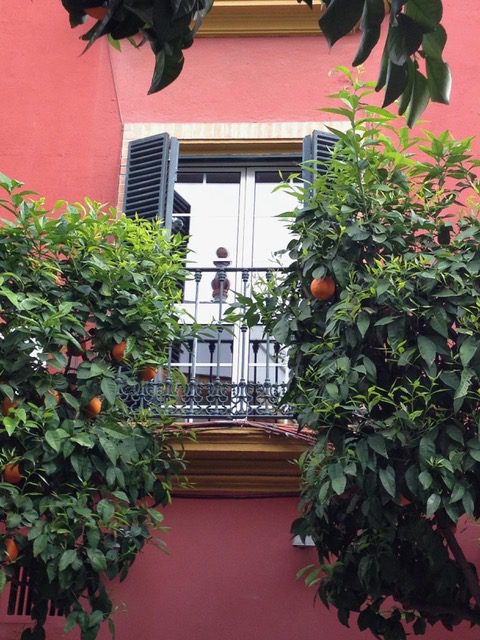
A colourful window in Triano / Photo provided by Sally Peabody
Where – and what – to eat in Triana
In addition to the market’s bounty of seafood, cheese, meat, vegetables, jamon, fresh pasta, spices, and olives, there are small restaurants, a worthwhile cooking school, and a tiny flamenco theater. As you wander through the plethora of stalls, keep an eye out for the tiny Obrador la Osa specializing in organic and vegan food. I love Lola’s classic egg and potato tortilla… which she will often make to order and which is perfect for two people.
Another worthwhile choice if you want to explore the wide-world of beloved Spanish rice-dishes is Arroceria Criaito. Yes, they make great paellas, but branch out and try a black rice with cuttlefish, or a ‘meloso’, a creamy soupy rice with seafood. Be aware that when ordering rice dishes the price is per person with a minimum of two people. And relax…this is not fast food.
Also, make a note to stop at Manu Jara, on the Punte Isabel II side of the market, any time of the day. This patisserie would be at home in Paris, with excellent coffee and an indecision-inducing array of pastries, cakes and flans. Manu Jara offers a few tables, or you can enjoy your treats along the adjacent banks of the river.
The riverbank in Triana is lined with walking paths. The views across to the bullring and the Cathedral with its Giralda tower are magnificent. Along the way, you will find spots perfect for an impromptu picnic.
Or, take a stroll into the throbbing heart of Triana for two excellent tapas options. Cross Puente Isabel II, pass the Castillo de St. Jorge, cross Plaza del Altozano and continue up the pedestrianized street to Calle Pages del Corro —and stop at Tipico Barra a Tapas. The large blackboard menu includes classics like patatas bravas, fried cod, shrimp-stuffed eggplant, jamon, cheeses, and numerous delicious choices. Try the pig cheeks (carrillada) for a surprisingly succulent experience. They will melt in your mouth.
Tipico is open throughout the day, which is unusual, and very welcome for visitors who may have missed lunch. It is much quieter in later afternoon before the evening rush commences. But if for some reason Tipico does not quite suit, simply walk a block along San Jacinto and feast at the tiny tapas bar of the neighborhood-favorite Paloma Blanca (or for a larger repast, sit down at their restaurant next door. You will find all the favorites on offer, along with meat and fish dishes in pleasantly full servings.)
A bit of research will yield loads of other irresistible dining and drinking suggestions in Triana, and, for certain, in every Sevillian quarter. Plus, there are numerous tapas tours. Indeed, if you want to be guided through the world of tapas and beyond, consider contacting Sam Lister, my colleague who with grace and startling expertise runs Tailormade Andalucia. Sam is totally client-focused, and he will help you access whatever your best might be of Seville, and well beyond.
Considering it all— its tapestry woven with centuries of history, and with classical and modern Spanish culture, and with a stunning array of culinary delights, great art, and a vivacious urbanity…Seville is, like Hemingway’s Paris, a “moveable feast.” And yes, it IS one “SWEET little city.”
If You Go to Seville
Best things to see in Seville
- Casa de la Memoria, or the Museo de Baile Flamenco in the Santa Cruz quarter for flamenco
- Museo de Bellas Artes – find tickets here!
- The Museum of Contemporary Art on the Isla Cartuja in the middle of the Guadalquivir river
- Caixa Forum
- Palacio de las Duenas, the ancestral home of the House of Alba
- Las Setas, an undulating mushroom-like structure covering a very good fresh food market, and featuring a Roman ruin in its subterranean level
Find even more things to see and do in Seville here
What to eat in Seville
- Brunilda, Puratasca, Vineria de San Telmo, La Azotea, or Eslava
- Taberna Los Coloniales for tapas and tasty grilled meats
- Castillo de St. Jorge, set on the banks of the Guadalquivir just off the historic Isabel II bridge.
- Obrador la Osa specializing in organic and vegan food
- Arroceria Criaito for Spanish rice-dishes
- Manu Jara, on the Punte Isabel II side of the market, any time of the day
- Tipico Barra a Tapas
- Paloma Blanca
- Yo Soy Tu Padre on Calle Gravina for Vermouth
Best places to stay in Seville
- Triana, a neighborhood across the Guadalquivir river from the Old City
- Tailormade Andalucia for tours with Sam
Sally Peabody is an avid traveller, a retired small-group tour leader and advisor for France, Spain, Turkey and Greece. She lives in Massachusetts. You can read her other articles from the JourneyWoman archives here:
Paris: A Haven for Chocolate Lovers
20 Things Women Should Know Before Visiting Istanbul, Turkey
Wandering Through Venice: The Cane in the Canal and Other Travel Stories
Athens: An Insiders View of its Culinary, Art, & History Secrets

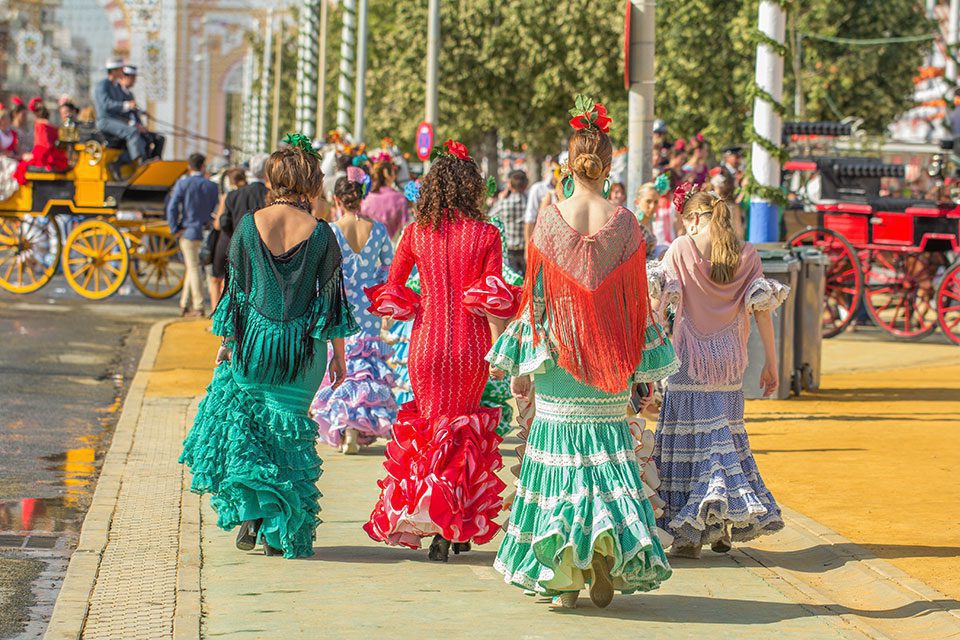

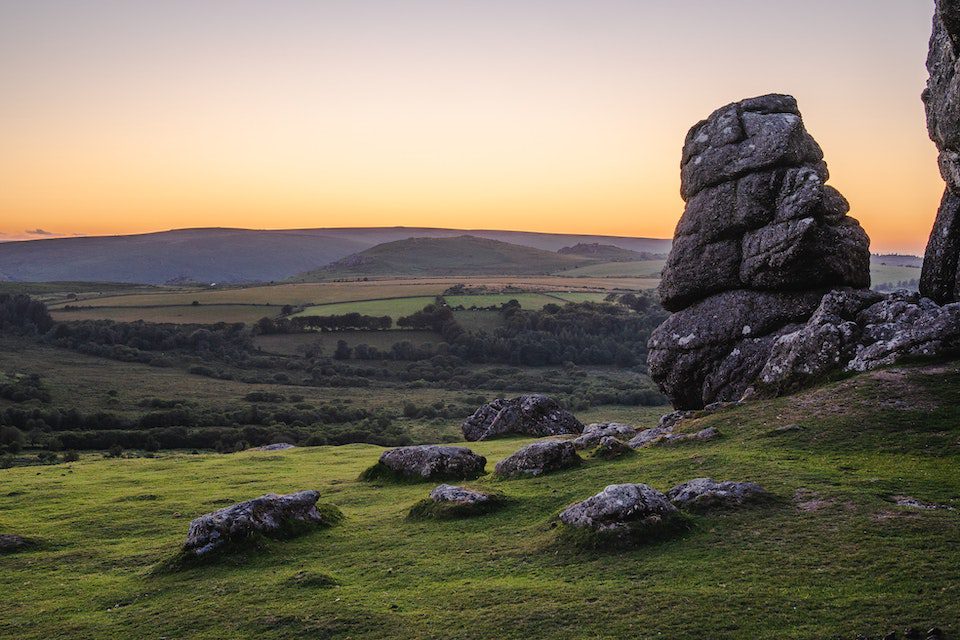
Excellent article and photos. It brings back happy memories of charming Seville, and makes me long to experience it again in more depth. Sally creates a picture of a multi-faceted gem of a city, stunning in art, architecture, history, cuisine and pageantry. This article should be extremely helpful in planning either a short or extended stay, whenever that becomes possible.
Thank you!